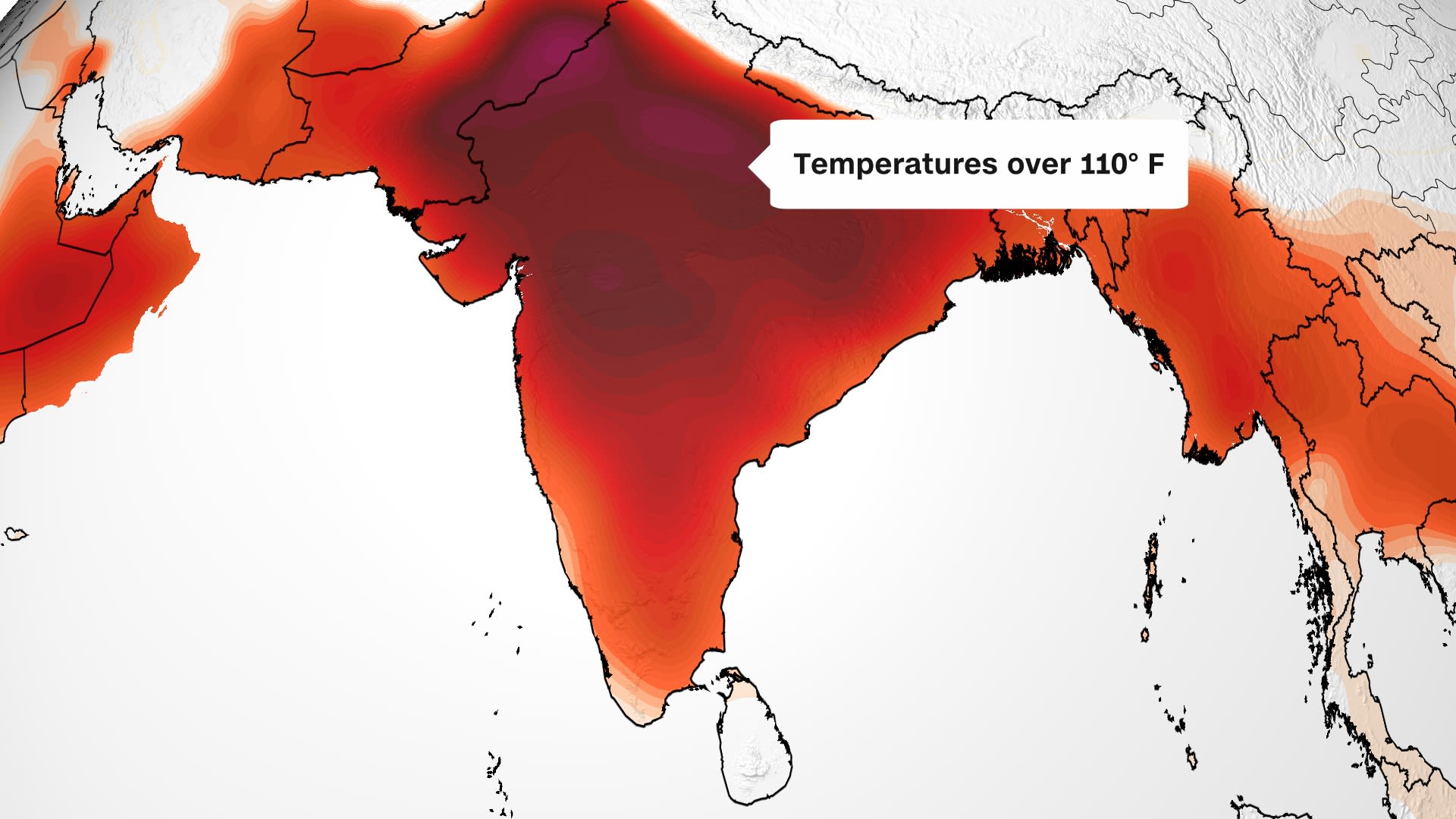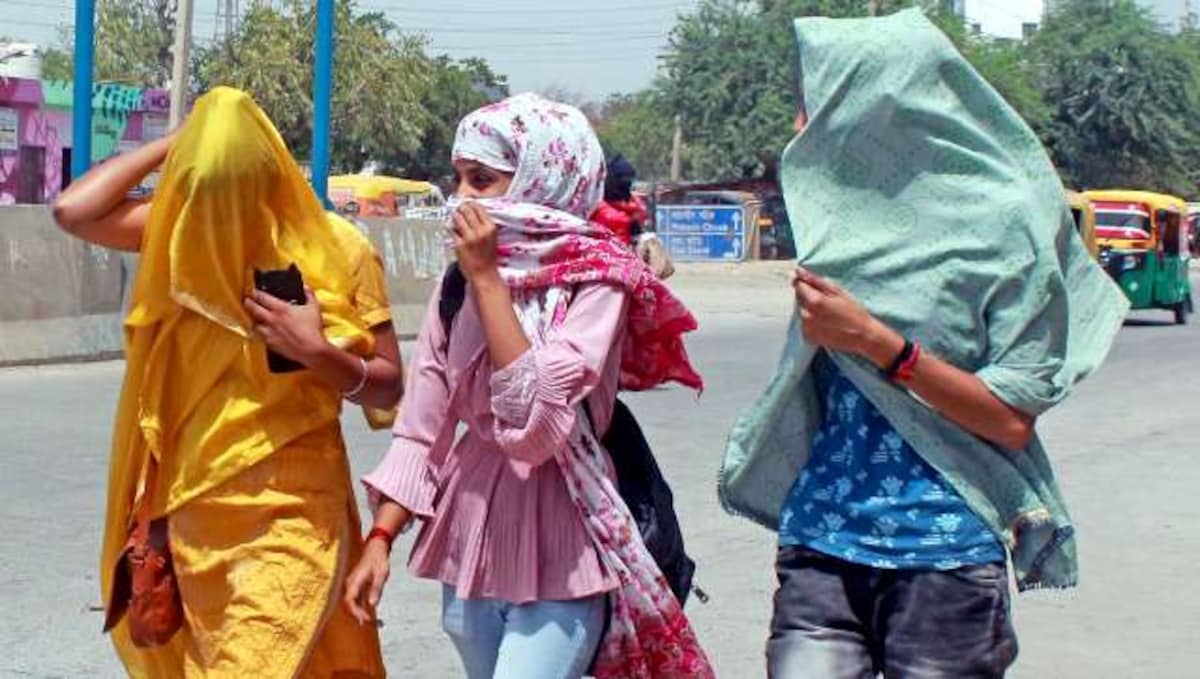Unprecedented November Heat Wave Sweeps Across India: IMD Warns of Soaring Temperatures

Unprecedented November Heat Wave Sweeps Across India: IMD Warns of Soaring Temperatures
In an alarming turn of events, the India Meteorological Department (IMD) has issued a forecast that spells a sweltering November for most parts of the country. The nation is bracing itself for an unusual spike in temperatures, as IMD predicts a significant departure from the typical chill associated with this time of year. As meteorological experts peer into their crystal balls, the message is clear: brace for an unseasonal heatwave as November unfolds.
While India has traditionally experienced cooler weather as November approaches, this year, it seems Mother Nature has a different plan. IMD’s Director-General, Mrutyunjay Mohapatra, has provided insight into the factors at play, shedding light on the unusual climatic conditions that are set to grip the nation.
What’s Behind the Heatwave Forecast?
The primary factor contributing to this unexpected surge in temperatures is the projection of higher-than-normal western disturbances in November. These disturbances typically usher in cool and moist air, causing temperatures to drop. However, this time around, the tables have turned.
Western disturbances are weather systems that originate in the Mediterranean region and bring precipitation and cooler air to the Indian subcontinent during the winter months. These disturbances are an essential component of India’s winter climate and often result in rainfall and a drop in temperatures. But this year, the IMD anticipates a different scenario.
According to Mr. Mohapatra, these disturbances will be anything but typical. Instead of cooling the region, they are expected to bring cloudy nights, which, counterintuitively, will trap heat and contribute to warmer temperatures. As a result, the chill that usually characterizes November in India is likely to be conspicuously absent.
Mr. Mohapatra further explained that the severity of cold nights, which many look forward to during this time of the year, will be notably reduced. In other words, India will not experience the respite from warmth that it typically does during the fall season. This departure from the norm is expected to impact the daily lives of millions of people across the country.

Implications for India
As the news of this unanticipated heatwave prediction spreads, there is growing concern among experts and the general public about the potential consequences for the nation. Unusually warm November weather is likely to have a range of significant effects, from agriculture and health to energy consumption and more.
1. Agricultural Impact: India’s agricultural sector is highly dependent on weather conditions, and the timing and intensity of the monsoon and winter seasons play a pivotal role in determining crop yields. The unseasonably warm temperatures in November could disrupt the normal crop cycle and affect the yield of winter crops such as wheat, mustard, and chickpeas. Farmers may need to adapt their planting and irrigation schedules to accommodate the unusual weather, which could lead to challenges in managing their crops.
2. Health Concerns: The warmer November weather may also pose health risks. Prolonged exposure to high temperatures can lead to heat-related illnesses, particularly for vulnerable populations such as the elderly and young children. The lack of relief from the heat during the night could make it difficult for people to cool down and recover from the daytime heat. Adequate measures to prevent heat stress and exhaustion will be crucial during this period.
3. Energy Consumption: Increased temperatures can lead to a surge in energy consumption as people rely more on cooling systems like air conditioners and fans. This, in turn, can strain the power grid, leading to potential power outages and increased electricity bills for consumers. Managing energy resources efficiently during this unseasonal heatwave will be essential to prevent disruptions.
4. Water Scarcity: The higher temperatures can contribute to increased evaporation rates, potentially leading to water scarcity in some regions. As the demand for water rises due to the need for hydration and cooling, it’s essential to manage water resources effectively to ensure that there is an adequate supply for both urban and rural areas.
5. Impact on Wildlife: Unusual weather patterns can also affect wildlife. Animals and birds may experience shifts in their behavior and migration patterns, which can impact their breeding and feeding habits. The availability of food and water sources for wildlife may also be affected.

Adaptation and Preparedness
As the nation faces this unanticipated challenge, it is crucial to focus on adaptation and preparedness. Government agencies, agricultural institutions, healthcare providers, and local communities must work together to mitigate the potential impacts of this unusual heatwave. Here are some key measures that can be taken:
1. Agricultural Adaptation: Farmers should consider adjusting their crop calendars and irrigation practices to align with the unseasonal weather. Government agencies can provide support and guidance to help farmers cope with the changing conditions.
2. Health Precautions: Public health campaigns can educate the public on the risks of heat-related illnesses and the importance of staying hydrated and cool during the unseasonal heatwave. Hospitals and healthcare facilities should be prepared to handle an increase in patients with heat-related ailments.
3. Energy Conservation: Energy providers should encourage energy conservation practices to reduce the strain on the power grid. This could include setting energy-saving guidelines and offering incentives for reduced consumption during peak hours.
4. Water Management: Effective water management is critical during this period. Efforts to reduce water wastage and promote sustainable water use should be encouraged.
5. Wildlife Conservation: Environmental agencies and wildlife experts can monitor the behavior of animals and birds and take measures to protect vulnerable species if their natural habitats are impacted.

Conclusion
India’s November heatwave forecast by the IMD serves as a stark reminder of the unpredictable nature of climate and weather patterns. While the nation has experienced warmer temperatures during certain periods, this unseasonal heatwave is a cause for concern. Preparing for and adapting to the potential impacts on agriculture, health, energy consumption, and the environment will be essential in minimizing the adverse effects of this unusual weather phenomenon.
As the nation watches the mercury rise during what is typically a cooler and more comfortable month, it is a reminder of the urgent need for climate resilience and the importance of addressing climate change to reduce the frequency of such extreme events. In the meantime, Indians across the country will be looking for ways to stay cool and safe during this unexpected November heatwave.



